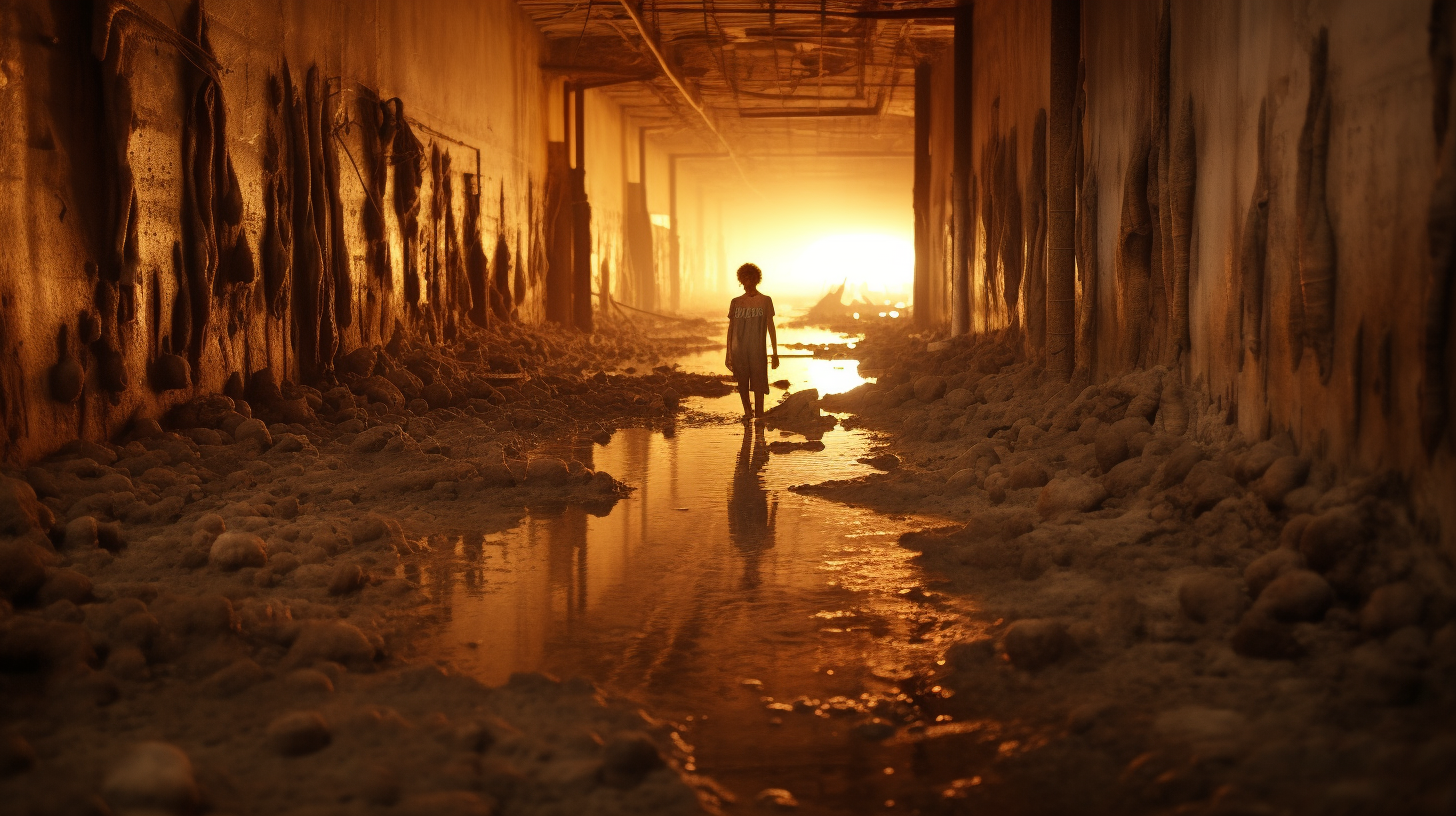In a world where the beating sun doesn’t just signify the changing of seasons but the very alteration of life’s rhythm, our narratives are scorched into the earth itself. This isn’t a tale of phoenix-like rebirth; rather, it’s a sobering chronicle of survival and legacy amid the relentless blaze of our altered environment.
There’s a paradox in the sweltering silence of our present-day dystopia — the heat has become our heritage. Where lush landscapes and vibrant ecosystems once stood, now only the charred memories persist, etching a stark reminder into the minds of those who courageously linger in what has been bequeathed to them by an ailing world.
The once quaint coastal towns now rest underwater, their stories of sun-kissed beaches and busy boardwalks existing only in the collective memory of the elders. Alongside those sunken tales are the desertified fields where crops used to dance with the wind; now, they rest dormant, hopeless against the sun’s incessent glare. People speak of these places with a hushed reverence, like curators in a museum of human folly, hoping that by speaking softly, they won’t awaken the ghosts of abundance past.
Our gathering places, once markets brimming with bountiful harvests, have transformed into forums where tales of ‘The Last Great Rain’ are traded like currency. Live theatre plays out the dramas of what it once meant to live symbiotically with nature, their tragic endgames receiving standing ovations from an audience too parched to weep.
The persistence of the past is more than just a way to remember — it has turned into a strategy for survival. Our stories have become instructional manuals, teaching us how to decipher the language of the scorched earth, to find the whispers of rivers beneath the cracked soil, and to seek shelter during the peak hours when the sun reigns with tyrannical fury.
Where technological promises of solar salvation once offered hope, now they stand like rusting sentinels, obelisks of our overconfidence in the face of nature’s boundless power. ‘We aimed for the sun,’ an elder said, ‘only to forget that we live on the ground, amongst its shadows.’ The silhouette of every nonoperational solar panel writes a different kind of hieroglyph, a narrative of hubris and neglect we mustn’t forget or repeat.
Children learn early to treat solar burns not as trips to the local doctor — since those are luxuries of history — but as lessons in respecting the ferocity of light. They listen attentively to the chronicles of once-wondrous technologies, knowing deep down that these rusted panels represent their heritage too, cautionary tales etched into their inheritance.
The social fabric that binds the remaining bastions of humanity together is woven from the threads of these shared experiences, making the act of remembering a communal ritual, an intricate dance of storytelling that interlaces personal loss with collective wisdom.
Perhaps there’s a cruel irony in calling this the Green Dystopia, for the color has long since been drained from our vantage point; replaced with the searing hues of inferno and the bleak palette of desiccation. Yet, even within this relentless dystopia, we trace our lineage in the ash and residue — a bittersweet testament to the enduring human spirit.
